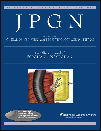Methods of Sedation in Pediatric Endoscopy: A Survey of NASPGHAN Members
ABSTRACT
The performance of endoscopy in children generally requires the concomitant administration of sedation to ensure the patient's safety, comfort, and cooperation throughout the procedures. New pharmacological agents, increased procedural volume, variable access to anesthesia support, and improvement in endoscopic technique have contributed to vast differences in sedation regimens for gastrointestinal procedures in patients of all ages. To better understand variation in practice patterns among pediatric gastroenterologists, the NASPGHAN Endoscopy and Procedures Committee surveyed 103 NASPGHAN members during a recent NASPGHAN national meeting. The results of this survey confirm that sedation practices vary widely and reflect continued uncertainty regarding optimal sedation regimens for pediatric endoscopy.




